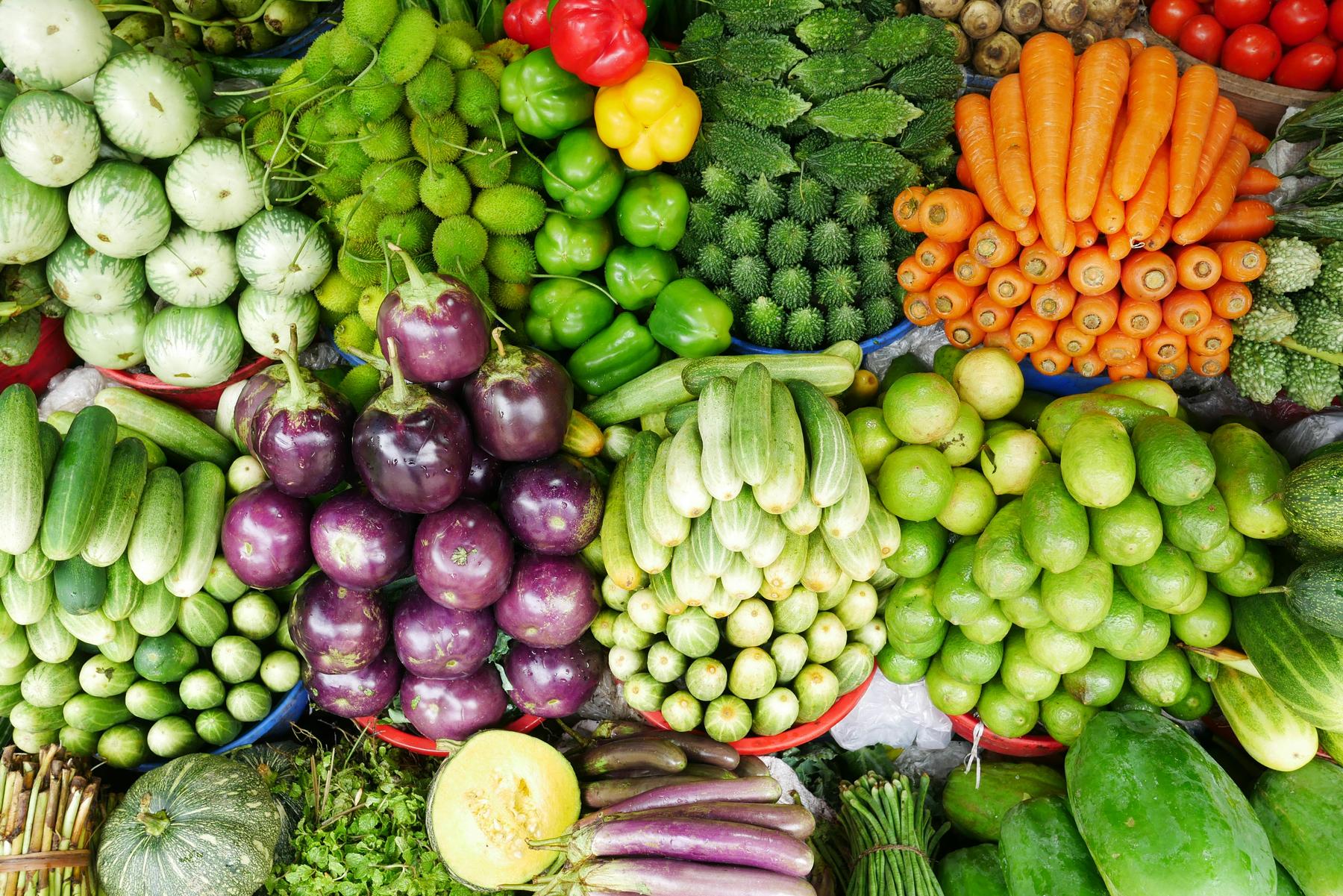Transitioning to a more plant-based diet represents one of the most impactful lifestyle changes for improving health outcomes and environmental sustainability. Research demonstrates that plant-based eating patterns correlate with significant weight management benefits, including an average 4.5 kg weight loss over 44 weeks without calorie restriction. However, many individuals find the prospect of dietary transformation overwhelming when approached as an all-or-nothing endeavour. This comprehensive guide outlines research-backed strategies for incrementally adopting plant-based nutrition, ensuring both nutritional adequacy and sustainable behavioural change.
Why Should You Consider Shifting to a Plant-Based Diet?
The scientific evidence supporting plant-based nutrition continues to strengthen across multiple health domains. Whole plant foods contain 7-13g of fibre per serving, which delays gastric emptying and modulates hunger hormones, enhancing satiety while providing 15-30% lower caloric density compared to animal proteins. Randomised trials demonstrate that participants following plant-based diets achieve greater weight loss than those maintaining omnivorous patterns—specifically, vegan diets correlate with 2.52 kg weight loss over 12-24 weeks compared to 1.48 kg for lacto-ovo vegetarians.
Beyond weight management, plant-based eating patterns show remarkable benefits for chronic disease prevention. Epidemiological data, including the comprehensive Adventist Health Study-2, found that individuals following plant-predominant diets had 55% lower rates of hypertension and 34% reduced risk of metabolic syndrome compared to omnivores. These outcomes stem from the synergistic effects of phytonutrients, antioxidants, and reduced saturated fat intake characteristic of plant-based eating patterns.
Environmental analyses further underscore the importance of dietary shift, revealing that replacing just 50% of animal products with plant alternatives could reduce agricultural emissions by 31% by 2050. Animal agriculture currently accounts for 14.5% of global greenhouse gas emissions, with beef production emitting 60 kg CO2-equivalent per kilogram—over 20 times that of legume production.
How Can You Begin Transitioning to Plant-Based Eating?
Successful dietary transitions rely on behavioural psychology principles, particularly incremental habit formation. Clinical trials demonstrate that adopting a 25-75% meat replacement model increases long-term adherence by 62% compared to abrupt elimination approaches. Consider these evidence-based starting points:
Start with a Single Meal Replacement
Begin by designating one daily meal as plant-based. Breakfast often represents the simplest starting point—replace dairy milk with calcium-fortified plant milk varieties in your morning cereal or smoothie. This small change alone reduces saturated fat intake while maintaining calcium content.
Implement the “Crowding Out” Method
Rather than focusing on foods to eliminate, concentrate on adding nutrient-dense plant foods to your existing diet. Research supports this approach as psychologically sustainable, as it removes the perception of restriction. For example:
- Add a serving of legumes to lunch and dinner meals
- Increase vegetable portions to occupy half your plate
- Incorporate fruit as snacks between meals
Over time, these additions naturally reduce space for animal products while ensuring nutritional adequacy.
Master Blended Cooking Techniques
Blended dishes offer an excellent transition strategy by combining familiar flavours with plant proteins. For instance, mushroom-lentil burger mixtures reduce saturated fat intake by 83% compared to traditional beef burgers while maintaining texture and umami characteristics. Similarly, bolognese sauces incorporating equal parts minced vegetables and meat facilitate palatability adjustment while doubling fibre content.
What Are the Best Plant-Based Protein Sources to Include?
Contrary to persistent misconceptions, plant proteins can provide all essential amino acids when consumed varietally. The key lies in understanding complementary protein combinations and bioavailability factors.
Complete Protein Combinations
While most plant proteins contain all essential amino acids, certain foods have higher proportions of specific amino acids. Combining different plant protein sources optimises amino acid profiles:
| Protein Combination | Complete Protein Example | Protein Content (per serving) |
|---|---|---|
| Grains + Legumes | Quinoa and black beans | 15g per 1 cup combined |
| Nuts + Legumes | Hummus with tahini | 12g per ½ cup |
| Seeds + Legumes | Lentil soup with hemp seeds | 18g per bowl |
| Soy Products | Tempeh (complete alone) | 19g per 100g |
Recent innovations in plant protein technology have also yielded products with protein content mirroring animal sources. High-moisture extrusion techniques create plant-based meats containing approximately 23g of protein per 100g—comparable to chicken breast.
Optimising Protein Absorption
Plant proteins generally demonstrate slightly lower digestibility than animal proteins. However, specific preparation methods enhance bioavailability:
- Fermentation (tempeh, miso) breaks down anti-nutrients and increases protein accessibility
- Sprouting legumes and grains increases protein digestibility by up to 30%
- Cooking legumes thoroughly improves amino acid availability
For individuals with higher protein requirements, such as athletes or those recovering from illness, consider increasing plant protein portions by approximately 10% to account for bioavailability differences.
How Do You Ensure Nutritional Adequacy on a Plant-Based Diet?
While whole plant foods supply most essential nutrients, certain micronutrients require strategic attention during transition.
Critical Nutrients to Monitor
Vitamin B12: This nutrient requires supplementation in fully plant-based diets due to its absence in unfortified plant foods. Options include:
- Sublingual B12 supplements (50-100 mcg daily)
- Fortified nutritional yeast (2 tablespoons providing 130% DV)
- B12-fortified plant milks or breakfast cereals
Iron: Plant-based (non-heme) iron has lower absorption rates than animal-derived (heme) iron. Optimise intake by:
- Pairing iron-rich foods (lentils, spinach) with vitamin C sources (bell peppers, citrus)
- Avoiding tea or coffee consumption with meals (tannins inhibit absorption)
- Using cast-iron cookware, which transfers small amounts of bioavailable iron
Calcium: While dairy represents a common calcium source, numerous plant alternatives exist:
- Calcium-set tofu (350mg per 100g)
- Fortified plant milks (300mg per 250ml)
- Dark leafy greens like kale and bok choy (absorption rates exceeding 50%)
Omega-3 Fatty Acids: Plant-based diets provide alpha-linolenic acid (ALA), which converts to EPA and DHA at varying efficiency. Consider:
- Daily ground flaxseed or chia seed consumption (1-2 tablespoons)
- Walnuts and hemp seeds in regular rotation
- Algae-derived EPA/DHA supplements for those with higher requirements
What Practical Strategies Help Maintain a Plant-Based Diet Long-Term?
Sustainability depends not only on nutritional knowledge but also on practical implementation. Research identifies several key factors in long-term adherence to plant-based eating patterns.
Meal Planning and Preparation
Batch cooking staples like whole grains, roasted vegetables, and marinated tofu streamlines weekly meal assembly. Digital tools reduce decision fatigue, with users reporting 40% higher adherence rates when following structured plans. Australian supermarkets now stock pre-cut vegetable mixes and canned legumes, reducing meal preparation time by approximately 30%.
Navigating Social Settings
Social dining represents a common challenge for dietary transitions. Effective strategies include:
- Pre-planning meals for events and communicating dietary preferences proactively
- Offering to bring plant-based dishes to shared gatherings
- Researching restaurant menus in advance to identify suitable options
- Focusing on plant-forward dishes from diverse global cuisines
Cultural Adaptation
Culturally tailored recipes enhance acceptance by aligning with traditional flavours. In Australia’s multicultural food landscape, explore:
- Thai tofu salads with traditional herbs and spices
- Ethiopian injera with legume-based stews
- Mediterranean mezze featuring hummus, baba ganoush, and tabbouleh
- Indian dals and vegetable curries
These approaches maintain cultural relevance while diversifying protein sources and enhancing adherence.
Transitioning Sustainably: Beyond the Plate
The shift toward plant-based eating extends beyond individual meal choices to encompass broader lifestyle considerations. Environmental analyses reveal that transitioning to plant-based diets could reduce an individual’s food-related emissions by 50%, equivalent to avoiding 8,000 km driven annually. Australian studies highlight that replacing 50% of beef consumption with mycoprotein would save 7.6 billion litres of water yearly.
Supporting this transition through community connections proves invaluable. Structured programs combining dietary guidance with behavioural coaching improve 12-month retention by 25%. Local plant-based cooking classes—increasing by 18% annually in Melbourne—foster skill development while providing social reinforcement. These community resources address both practical and psychological aspects of dietary change, creating sustainable frameworks for long-term success.
Remember that plant-based eating exists on a spectrum rather than as a binary choice. Each plant-forward meal contributes positively to health outcomes and environmental impact, regardless of whether you ultimately adopt a fully plant-based diet. The cumulative effect of incremental changes often yields more sustainable results than attempting dramatic overnight transformation.
Will I get enough protein on a plant-based diet?
Yes, adequate protein intake is achievable through strategic plant food selection. Research demonstrates that combining diverse plant protein sources provides all essential amino acids. Foods like legumes (19-20g protein per cup), tempeh (19g per 100g), seitan (25g per 100g), and quinoa (8g per cup) offer substantial protein content. Athletes or those with higher protein requirements may need to increase portions by approximately 10% to account for slightly lower bioavailability compared to animal proteins.
How can I maintain iron levels without red meat?
Plant-based diets can provide sufficient iron through careful food selection and preparation techniques. Excellent plant sources include lentils (6.6mg per cup), tofu (6.6mg per 100g), spinach (6.4mg per cup), and fortified cereals. Since plant iron (non-heme) has lower absorption rates, pairing iron-rich foods with vitamin C sources increases absorption up to sixfold. Regular monitoring through blood tests during transition can ensure adequacy.
Is a plant-based diet suitable for weight management?
Evidence strongly supports plant-based diets for weight management. Clinical studies demonstrate that plant-based diets correlate with an average 4.5 kg weight loss over 44 weeks without calorie restriction. The high fibre content (7-13g per serving) of whole plant foods enhances satiety while providing 15-30% lower caloric density compared to animal proteins. For optimal results, emphasize whole, unprocessed plant foods rather than processed plant alternatives.
What supplements should I consider when adopting a plant-based diet?
Vitamin B12 supplementation is essential for fully plant-based diets, as this nutrient occurs naturally only in animal products. Options include daily supplements (50-100 mcg), fortified nutritional yeast, or B12-fortified plant milks. Depending on individual factors and dietary composition, some people may benefit from algae-derived omega-3 supplements or vitamin D supplementation, particularly in regions with limited sun exposure. Consultation with healthcare providers can determine individual supplementation needs.
How can I make plant-based eating affordable?
Contrary to common perception, plant-based diets can be economical when centred on whole foods. Dried legumes, whole grains, and seasonal produce typically cost less per gram of protein and overall nutrition than animal products. Strategies include buying dried beans in bulk, purchasing frozen vegetables, and meal planning to minimize food waste. Community gardens and food co-ops also offer additional cost-saving opportunities.



